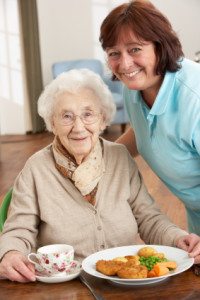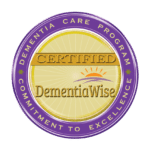Greens are an essential part of a healthy diet, and elderly adults need them as much as anyone else. It’s a good idea for elderly home care providers to know some great ways to serve greens so they can ensure their elderly senior is getting all the good nutrition he needs from leafy green vegetables.
 Some of the most nutritious leafy green vegetables include
Some of the most nutritious leafy green vegetables include
- Spinach
- Romaine lettuce
- Alfalfa
- Amaranth
- Celery
- Watercress
- Chard
- Borage
- Mustard leaves
- Wild cabbage
- Kale
- Cauliflower
- Cabbage
- Broccoli
- Brussels sprouts
- Turnip leaves
- Bok Choy
- Napa cabbage
- Lamb’s quarters
- Endive
- Chicory
- Radicchio
- Fennel
- Lettuce
- Dandelion greens
There are literally thousands more. With so many to choose from, a person can literally make a countless variety of recipes using leafy green vegetables. In fact since the dawn of time, humans have been using leaves as food. They are a concentrated source of nutrients and a great source of dietary fiber.
Some of the less-known greens must be cooked; most greens can be eaten raw. Check if you aren’t sure. Not all plant leaves are edible; for example rhubarb leaves are highly poisonous, so it’s best to stick with leafy greens from the grocery store.
Some sources estimate that Americans eat only 1 tablespoon of vegetables on average on a daily basis. That’s a pitiful amount when you consider that the daily recommendation for vegetables is more in the size of cups full rather than spoonsful. The most commonly eaten vegetables are canned corn, peas and green beans. While these veggies are good and have their own unique nutrients, there should be a minimum amount of leafy green veggies daily.
Leafy greens are powerhouses of nutrition. They deliver a treasure of minerals like magnesium, potassium, iron and calcium. They also boast vitamins K, E, B, and C. Not to mention the coveted phytonutrients that everyone is raging about, and rightly so. Phytonutrients are available only in plant sources, and include lutein and zeaxanthin for the eyes and many cell functions, and beta-carotene. Some dark green leaves are even found to contain small amounts of the omega-3 fats.
It’s hard to get vitamin K from any other source, and yet one cup of most cooked greens will give you at least 9 times or more of the minimum recommended daily intake of this important vitamin. It is apparent that most people don’t get nearly enough vitamin K in their diets.
There are lots of ways to eat all those yummy greens: raw, cooked, steamed, chopped into lasagna or casseroles, in quiches or steamed with a sprinkle of oil or nuts on top. Some people even juice them. You don’t get as much fiber that way, but you can drink a lot of greens in just a few swallows. Remember, greens are nutritious and delicious!
If you have a loved one who could benefit from the help of elder care services in River Oaks, TX contact the caregivers at At Your Side Home Care. We help seniors and their families with many levels of home care service. Call (832) 271-1600 for more information.
Our Certified Nurse Aides, 24-Hour Live-in Assistants and Home Health Aides are available 24 hours a day, 365 days a year. We also provide the security and confidence of 24-hour Telephone Assistance, so fast, reliable help is always available when it's needed. To learn more about our homecare services see our homecare services page.
Different people need different levels of homecare. To meet the requirements of our clients, At Your Side Homecare maintains consistent staffing levels of caring professionals. Homecare service is available for as little as a few hours a week, or as many as 24 hours a day, seven days a week
- What Solutions Can Help Seniors with Mental Health Challenges? - April 18, 2025
- How Does Senior Home Care Help Make Aging in Place Possible? - April 11, 2025
- Best Balance Exercises for Seniors - April 4, 2025



